Best 100 Moon and Full Moon Monthly Celebration, Parties, Events, Shows, Books, eBooks, Information, Pictures, Video, Products and Services plus lots of Promotional Contents, Free for all Visitors
You’re invited to connect with a global community of lunar observers. The next International Observe the Moon Nigh at: https://moon.nasa.gov/observe-the-moon-night/
The Moon moderates Earth’s wobble on its axis, leading to a relatively stable climate over billions of years. Moon In Depth by NASA https://moon.nasa.gov/
*** ”Moon Festival September 24, 2018” .. a Chinese festival held in the middle of the autumn. “There, for every major festival – such as New Year, the mid-autumn Moon Festival , and Tomb-Sweeping Day, when Chinese visit their ancestral tombs – we would celebrate family reunions.
Richest World Dreams The most 100 Impressive and Beautiful photos of the Moon (Super Moon 2016) The 50 SuperMoonFail worst images | https://youtu.be/Yddad4owWeo SuperMoon 2016 | The most spectacular supermoon since 1948 will light up the sky, appearing 14 per cent bigger and 30 per cent brighter than usual. The event on Monday November 14 – described as “undeniably beautiful” by American space agency Nasa – is the result of the moon coming closer to Earth than it has done for 69 years. Nothing will match it until the moon makes a similar approach on November 25 2034.
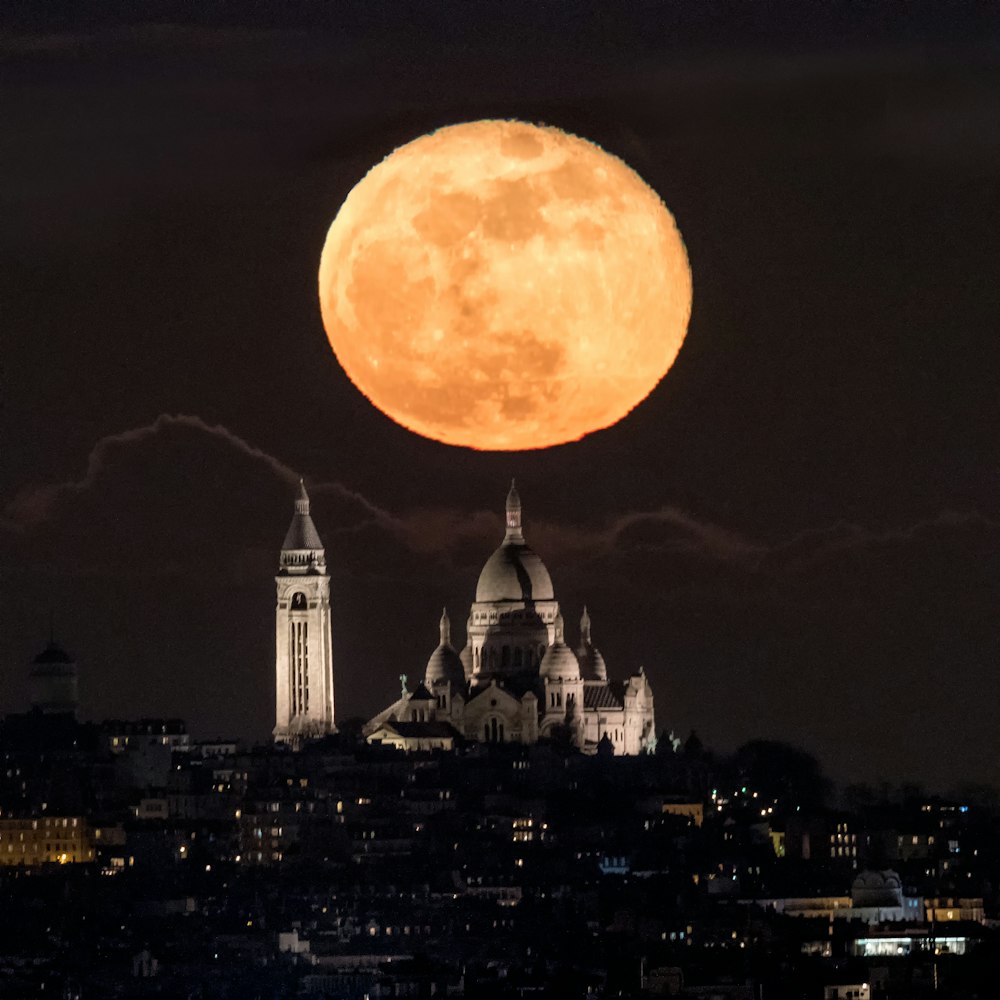
Moon In Depth by NASA https://moon.nasa.gov/
The regular daily and monthly rhythms of Earth’s only natural satellite, the Moon, have guided timekeepers for thousands of years. Its influence on Earth’s cycles, notably tides, has been charted by many cultures in many ages. The Moon moderates Earth’s wobble on its axis, leading to a relatively stable climate over billions of years.
Quick Facts
Average Distance from Earth: 238,855 | 384,400 kilometers, Orbit and Rotation Period: 27.32 Earth Days
Equatorial Radius: 1,079.6 miles | 1.737.5 kilometers, Mass: 0.0123 of Earth’s (a bit more than 1 percent)
Gravity: 0.166 of Earth’s (If you weigh 100 pounds (45 kilograms) on Earth, you’d weight 16.6 pounds (7.5 kilograms) on the moon)
Temperature Range: -414 to 253 degrees Farenheit (-248 to 123 degrees Celsius)
++++++
See more at: Google Moon Images Look at 1000 face of moon
Google.com/moon Look at face of moon
+++++
Full Moon Archives – The Virtual Telescope Project 2.0
www.virtualtelescope.eu › tag › full-moon
The Super Moon will be back, but with something special: it will be the largest full Moon of 2020. At Virtual Telescope we will show it live, online, …
++++
Supermoon, Blood Moon, Blue Moon and Harvest Moon
A full moon occurs when the side of the Moon facing Earth is fully lit up by the Sun. There are a few different types of unusual full moon types, which include blood moons, supermoons, blue moons, and harvest moons, and others
+++++
The harvest moon is the name given to the full Moon that takes place closest to the autumn equinox.
This is why the harvest moon can fall any time between September and October.
https://www.bbc.co.uk/newsround/41484454
++++
When Is the Next Full Moon? | 2020 Full Moon Dates and …
www.farmersalmanac.com › Astronomy
Your full Moon resource! Be sure to check our Full Moon Calendar each month for all the full Moon dates, names, and times for the year.
++++
Full Moon Ritual at Google
Enjoy this 28-minute relaxing and peaceful instrumental meditation track created for the 2020 Full Flower Moon. The full moon is said to heighten the activity of the mind, amplifying conscious thoughts as well as pulling sub-conscious ones to the surface/conscious mind. This can awaken one’s spirituality, making it particularly beneficial to participate in a full moon meditation, with comfort, peace, healing and wisdom.
Full moon, Harvest Moon music, audio, songs and more at: Amazon music
++++
Full moon calendar 1900-2050
www.fullmoon.info › fullmoon-calendar_1900-2050
Full moon …
These pages are dedicated to the full moon. And the people who are looking for magic.
The full moon knowledge https://www.fullmoon.info/en/fullmoon-knowledge.html
The full moon poems
A poetry collection of well-known and unknown poets. These works have one thing in common: the word “full moon”.
If you would like to make your full moon poem public, please send it to us.
https://www.fullmoon.info/en/fullmoon-poems.html
++++
| home.hiwaay.net › ~krcool › Astro › moon › fullmoon Date and time (GMT) Julian Day 1920 Jan 5 21:04 Mon Full Moon Dates Between (1900 – 2100) |
Search for every full moon between 1900 and 2100. Included are month, day of month and day of week Time is given in GMT along with the Julian date. |
2019 Dec 12 05:14 Thu 2458829.718
| 2020 – 2030 |
Date and time (GMT) Julian Day 2020 Jan 10 19:23 Fri 2458859.308 2020 Feb 9 07:35 Sun 2458888.816 2020 Mar 9 17:49 Mon 2458918.242 2020 Apr 8 02:37 Wed 2458947.609 2020 May 7 10:47 Thu 2458976.949 2020 Jun 5 19:15 Fri 2459006.302 2020 Jul 5 04:46 Sun 2459035.699 2020 Aug 3 16:00 Mon 2459065.167 2020 Sep 2 05:23 Wed 2459094.724 2020 Oct 1 21:06 Thu 2459124.379 2020 Oct 31 14:51 Sat 2459154.119 2020 Nov 30 09:31 Mon 2459183.897 2020 Dec 30 03:29 Wed 2459213.645 2021 Jan 28 19:17 Thu 2459243.303 2021 Feb 27 08:19 Sat 2459272.847 2021 Mar 28 18:50 Sun 2459302.285 2021 Apr 27 03:34 Tue 2459331.649 2021 May 26 11:16 Wed 2459360.969 2021 Jun 24 18:42 Thu 2459390.279 2021 Jul 24 02:39 Sat 2459419.610 2021 Aug 22 12:03 Sun 2459449.002 2021 Sep 20 23:56 Mon 2459478.497 2021 Oct 20 14:58 Wed 2459508.124 2021 Nov 19 08:59 Fri 2459537.874 2021 Dec 19 04:37 Sun 2459567.692 2022 Jan 17 23:50 Mon 2459597.493 2022 Feb 16 16:58 Wed 2459627.207 2022 Mar 18 07:19 Fri 2459656.805 2022 Apr 16 18:57 Sat 2459686.290 2022 May 16 04:16 Mon 2459715.678 2022 Jun 14 11:53 Tue 2459744.995 2022 Jul 13 18:39 Wed 2459774.277 2022 Aug 12 01:36 Fri 2459803.567 2022 Sep 10 09:59 Sat 2459832.916 2022 Oct 9 20:56 Sun 2459862.372 2022 Nov 8 11:04 Tue 2459891.961 2022 Dec 8 04:10 Thu 2459921.674 2023 Jan 6 23:10 Fri 2459951.465 2023 Feb 5 18:30 Sun 2459981.271 2023 Mar 7 12:42 Tue 2460011.029 2023 Apr 6 04:36 Thu 2460040.692 2023 May 5 17:36 Fri 2460070.233 2023 Jun 4 03:43 Sun 2460099.655 2023 Jul 3 11:39 Mon 2460128.985 2023 Aug 1 18:32 Tue 2460158.272 2023 Aug 31 01:36 Thu 2460187.567 2023 Sep 29 09:58 Fri 2460216.915 2023 Oct 28 20:25 Sat 2460246.351 2023 Nov 27 09:18 Mon 2460275.888 2023 Dec 27 00:35 Wed 2460305.524 2024 Jan 25 17:56 Thu 2460335.247 2024 Feb 24 12:32 Sat 2460365.022 2024 Mar 25 07:02 Mon 2460394.793 2024 Apr 23 23:51 Tue 2460424.494 2024 May 23 13:55 Thu 2460454.080 2024 Jun 22 01:09 Sat 2460483.548 2024 Jul 21 10:18 Sun 2460512.929 2024 Aug 19 18:26 Mon 2460542.268 2024 Sep 18 02:35 Wed 2460571.608 2024 Oct 17 11:28 Thu 2460600.978 2024 Nov 15 21:30 Fri 2460630.396 2024 Dec 15 09:03 Sun 2460659.877 2025 Jan 13 22:29 Mon 2460689.437 2025 Feb 12 13:55 Wed 2460719.080 2025 Mar 14 06:56 Fri 2460748.789 2025 Apr 13 00:24 Sun 2460778.517 2025 May 12 16:58 Mon 2460808.207 2025 Jun 11 07:46 Wed 2460837.824 2025 Jul 10 20:38 Thu 2460867.360 2025 Aug 9 07:56 Sat 2460896.831 2025 Sep 7 18:09 Sun 2460926.256 2025 Oct 7 03:48 Tue 2460955.658 2025 Nov 5 13:21 Wed 2460985.056 2025 Dec 4 23:16 Thu 2461014.469 2026 Jan 3 10:04 Sat 2461043.919 2026 Feb 1 22:11 Sun 2461073.424 2026 Mar 3 11:40 Tue 2461102.986 2026 Apr 2 02:14 Thu 2461132.593 2026 May 1 17:25 Fri 2461162.226 2026 May 31 08:47 Sun 2461191.866 2026 Jun 29 23:58 Mon 2461221.499 2026 Jul 29 14:37 Wed 2461251.109 2026 Aug 28 04:20 Fri 2461280.681 2026 Sep 26 16:50 Sat 2461310.201 2026 Oct 26 04:13 Mon 2461339.676 2026 Nov 24 14:55 Tue 2461369.122 2026 Dec 24 01:30 Thu 2461398.562 2027 Jan 22 12:19 Fri 2461428.013 2027 Feb 20 23:26 Sat 2461457.476 2027 Mar 22 10:47 Mon 2461486.949 2027 Apr 20 22:30 Tue 2461516.438 2027 May 20 11:01 Thu 2461545.959 2027 Jun 19 00:46 Sat 2461575.532 2027 Jul 18 15:47 Sun 2461605.158 2027 Aug 17 07:31 Tue 2461634.813 2027 Sep 15 23:06 Wed 2461664.462 2027 Oct 15 13:49 Fri 2461694.076 2027 Nov 14 03:28 Sun 2461723.644 2027 Dec 13 16:11 Mon 2461753.174 2028 Jan 12 04:05 Wed 2461782.670 2028 Feb 10 15:06 Thu 2461812.129 2028 Mar 11 01:09 Sat 2461841.548 2028 Apr 9 10:30 Sun 2461870.938 2028 May 8 19:51 Mon 2461900.327 2028 Jun 7 06:11 Wed 2461929.758 2028 Jul 6 18:13 Thu 2461959.259 2028 Aug 5 08:12 Sat 2461988.842 2028 Sep 3 23:50 Sun 2462018.493 2028 Oct 3 16:27 Tue 2462048.185 2028 Nov 2 09:19 Thu 2462077.888 2028 Dec 2 01:42 Sat 2462107.571 2028 Dec 31 16:50 Sun 2462137.201 2029 Jan 30 06:05 Tue 2462166.753 2029 Feb 28 17:13 Wed 2462196.217 2029 Mar 30 02:29 Fri 2462225.603 2029 Apr 28 10:39 Sat 2462254.944 2029 May 27 18:40 Sun 2462284.278 2029 Jun 26 03:25 Tue 2462313.642 2029 Jul 25 13:38 Wed 2462343.068 2029 Aug 24 01:53 Fri 2462372.578 2029 Sep 22 16:31 Sat 2462402.188 2029 Oct 22 09:30 Mon 2462431.896 2029 Nov 21 04:04 Wed 2462461.669 2029 Dec 20 22:47 Thu 2462491.449 2030 Jan 19 15:55 Sat 2462521.163 2030 Feb 18 06:22 Mon 2462550.765 2030 Mar 19 17:59 Tue 2462580.249 2030 Apr 18 03:22 Thu 2462609.640 2030 May 17 11:21 Fri 2462638.973 2030 Jun 15 18:43 Sat 2462668.280 2030 Jul 15 02:14 Mon 2462697.593 2030 Aug 13 10:46 Tue 2462726.949 2030 Sep 11 21:20 Wed 2462756.389 2030 Oct 11 10:49 Fri 2462785.951 2030 Nov 10 03:33 Sun 2462815.648 2030 Dec 9 22:42 Mon 2462845.446
More at : http://home.hiwaay.net/~krcool/Astro/moon/fullmoon.htm
++++
The Full Moon By Vigdis Hocken
The Full Moon is the most spectacular Moon phase when the entire face of the Moon is lit up.
The Full Moon – Time and Datewww.timeanddate.com › astronomy › moon › full-moon
The Full Moon is the moment the entire face of the Moon is illuminated by the Sun’s rays. … 100% Illuminated … Most years have 12 Full Moons, 1 each month. … The symbol for Full Moon in modern calendars is a completely white circle.
+++++
Phases of the Moon: 2001 to 2100 Universal Time
Introduction Read and see all 100 year at: http://astropixels.com/ephemeris/phasescat/phases2001.html
The following table gives the date and time (Universal Time) of the Moon’s phases for 100 years. This data is of particular use to historical research projects.
The length of the mean synodic month (New Moon to New Moon) as calculated for the year 2000 is 29.530588 days (= 29d 12h 44m 03s). However, the length of any one synodic month can vary from 29.26 to 29.80 days due to perturbing effects of the Sun on the Moon’s eccentric orbit. For example, see Length of the Synodic Month: 2001 to 2100.
For conversion to time zones other than Universal Time, see Time Zones. If Daylight Saving Time is in effect, add one hour to the times listed.
Historians should note that the astronomical dating system used in these tables includes the year “0” while the traditional BCE – CE dating convention does not. Thus, the year “0” here corresponds to “1 BCE”, the year “-100” is “101 BCE”, and so on. The old style Julian calendar is used for dates prior to 1582 Oct 15, while the modern Gregorian calendar is used after that date. For more information, see calendar dates.
If an eclipse of the Sun or Moon takes place on a given date, it is indicated to the right of the date by a single character representing the type of eclipse. Abbreviations for the different types of eclipses appear below.
Phases of the Moon: 2021 to 2030
Universal Time (UT)
Year New Moon First Quarter Full Moon Last Quarter
2021 Jan 6 09:37 Jan 13 05:00 Jan 20 21:02 Jan 28 19:16 Feb 4 17:37 Feb 11 19:06 Feb 19 18:47 Feb 27 08:17 Mar 6 01:30 Mar 13 10:21 Mar 21 14:40 Mar 28 18:48 Apr 4 10:02 Apr 12 02:31 Apr 20 06:59 Apr 27 03:31 May 3 19:50 May 11 19:00 May 19 19:13 May 26 11:14 t Jun 2 07:24 Jun 10 10:53 A Jun 18 03:54 Jun 24 18:40 Jul 1 21:11 Jul 10 01:17 Jul 17 10:11 Jul 24 02:37 Jul 31 13:16 Aug 8 13:50 Aug 15 15:20 Aug 22 12:02 Aug 30 07:13 Sep 7 00:52 Sep 13 20:39 Sep 20 23:55 Sep 29 01:57 Oct 6 11:05 Oct 13 03:25 Oct 20 14:57 Oct 28 20:05 Nov 4 21:15 Nov 11 12:46 Nov 19 08:58 p Nov 27 12:28 Dec 4 07:43 T Dec 11 01:36 Dec 19 04:36 Dec 27 02:24
Year New Moon First Quarter Full Moon Last Quarter
2022 Jan 2 18:34 Jan 9 18:11 Jan 17 23:49 Jan 25 13:41 Feb 1 05:46 Feb 8 13:50 Feb 16 16:57 Feb 23 22:32 Mar 2 17:35 Mar 10 10:45 Mar 18 07:18 Mar 25 05:37 Apr 1 06:24 Apr 9 06:48 Apr 16 18:55 Apr 23 11:56 Apr 30 20:28 P May 9 00:21 May 16 04:14 t May 22 18:43 May 30 11:30 Jun 7 14:48 Jun 14 11:52 Jun 21 03:11 Jun 29 02:52 Jul 7 02:14 Jul 13 18:37 Jul 20 14:18 Jul 28 17:55 Aug 5 11:07 Aug 12 01:36 Aug 19 04:36 Aug 27 08:17 Sep 3 18:08 Sep 10 09:59 Sep 17 21:52 Sep 25 21:54 Oct 3 00:14 Oct 9 20:55 Oct 17 17:15 Oct 25 10:49 P Nov 1 06:37 Nov 8 11:02 t Nov 16 13:27 Nov 23 22:57 Nov 30 14:36 Dec 8 04:08 Dec 16 08:56 Dec 23 10:17 Dec 30 01:21
Year New Moon First Quarter Full Moon Last Quarter
2023 Jan 6 23:08 Jan 15 02:10 Jan 21 20:53 Jan 28 15:19 Feb 5 18:29 Feb 13 16:01 Feb 20 07:06 Feb 27 08:06 Mar 7 12:40 Mar 15 02:08 Mar 21 17:23 Mar 29 02:32 Apr 6 04:35 Apr 13 09:11 Apr 20 04:12 H Apr 27 21:20 May 5 17:34 n May 12 14:28 May 19 15:53 May 27 15:22 Jun 4 03:42 Jun 10 19:31 Jun 18 04:37 Jun 26 07:50 Jul 3 11:39 Jul 10 01:48 Jul 17 18:32 Jul 25 22:07 Aug 1 18:32 Aug 8 10:28 Aug 16 09:38 Aug 24 09:57 Aug 31 01:35 Sep 6 22:21 Sep 15 01:40 Sep 22 19:32 Sep 29 09:58 Oct 6 13:48 Oct 14 17:55 A Oct 22 03:29 Oct 28 20:24 p Nov 5 08:37 Nov 13 09:27 Nov 20 10:50 Nov 27 09:16 Dec 5 05:49 Dec 12 23:32 Dec 19 18:39 Dec 27 00:33
Year New Moon First Quarter Full Moon Last Quarter
2024 Jan 4 03:30 Jan 11 11:57 Jan 18 03:53 Jan 25 17:54 Feb 2 23:18 Feb 9 22:59 Feb 16 15:01 Feb 24 12:30 Mar 3 15:24 Mar 10 09:00 Mar 17 04:11 Mar 25 07:00 n Apr 2 03:15 Apr 8 18:21 T Apr 15 19:13 Apr 23 23:49 May 1 11:27 May 8 03:22 May 15 11:48 May 23 13:53 May 30 17:13 Jun 6 12:38 Jun 14 05:18 Jun 22 01:08 Jun 28 21:53 Jul 5 22:57 Jul 13 22:49 Jul 21 10:17 Jul 28 02:51 Aug 4 11:13 Aug 12 15:19 Aug 19 18:26 Aug 26 09:26 Sep 3 01:56 Sep 11 06:06 Sep 18 02:34 p Sep 24 18:50 Oct 2 18:49 A Oct 10 18:55 Oct 17 11:26 Oct 24 08:03 Nov 1 12:47 Nov 9 05:56 Nov 15 21:29 Nov 23 01:28 Dec 1 06:22 Dec 8 15:27 Dec 15 09:02 Dec 22 22:18 Dec 30 22:27
Year New Moon First Quarter Full Moon Last Quarter
2025 Jan 6 23:56 Jan 13 22:27 Jan 21 20:31 Jan 29 12:36 Feb 5 08:02 Feb 12 13:53 Feb 20 17:33 Feb 28 00:45 Mar 6 16:32 Mar 14 06:55 t Mar 22 11:30 Mar 29 10:58 P Apr 5 02:15 Apr 13 00:22 Apr 21 01:36 Apr 27 19:31 May 4 13:52 May 12 16:56 May 20 11:59 May 27 03:02 Jun 3 03:41 Jun 11 07:44 Jun 18 19:19 Jun 25 10:31 Jul 2 19:30 Jul 10 20:37 Jul 18 00:38 Jul 24 19:11 Aug 1 12:41 Aug 9 07:55 Aug 16 05:12 Aug 23 06:06 Aug 31 06:25 Sep 7 18:09 t Sep 14 10:33 Sep 21 19:54 P Sep 29 23:54 Oct 7 03:48 Oct 13 18:13 Oct 21 12:25 Oct 29 16:21 Nov 5 13:19 Nov 12 05:28 Nov 20 06:47 Nov 28 06:59 Dec 4 23:14 Dec 11 20:52 Dec 20 01:43 Dec 27 19:10
Year New Moon First Quarter Full Moon Last Quarter
2026 Jan 3 10:03 Jan 10 15:48 Jan 18 19:52 Jan 26 04:48 Feb 1 22:09 Feb 9 12:43 Feb 17 12:01 A Feb 24 12:28 Mar 3 11:38 t Mar 11 09:39 Mar 19 01:23 Mar 25 19:18 Apr 2 02:12 Apr 10 04:52 Apr 17 11:52 Apr 24 02:32 May 1 17:23 May 9 21:11 May 16 20:01 May 23 11:11 May 31 08:45 Jun 8 10:01 Jun 15 02:54 Jun 21 21:55 Jun 29 23:57 Jul 7 19:29 Jul 14 09:44 Jul 21 11:06 Jul 29 14:36 Aug 6 02:22 Aug 12 17:37 T Aug 20 02:46 Aug 28 04:18 p Sep 4 07:51 Sep 11 03:27 Sep 18 20:44 Sep 26 16:49 Oct 3 13:25 Oct 10 15:50 Oct 18 16:13 Oct 26 04:12 Nov 1 20:28 Nov 9 07:02 Nov 17 11:48 Nov 24 14:53 Dec 1 06:09 Dec 9 00:52 Dec 17 05:43 Dec 24 01:28 Dec 30 19:00
Year New Moon First Quarter Full Moon Last Quarter
2027 Jan 7 20:24 Jan 15 20:34 Jan 22 12:17 Jan 29 10:56 Feb 6 15:56 A Feb 14 07:58 Feb 20 23:24 n Feb 28 05:16 Mar 8 09:29 Mar 15 16:25 Mar 22 10:44 Mar 30 00:54 Apr 6 23:51 Apr 13 22:57 Apr 20 22:27 Apr 28 20:18 May 6 10:59 May 13 04:44 May 20 10:59 May 28 13:58 Jun 4 19:40 Jun 11 10:56 Jun 19 00:44 Jun 27 04:54 Jul 4 03:02 Jul 10 18:39 Jul 18 15:45 Jul 26 16:55 Aug 2 10:05 T Aug 9 04:54 Aug 17 07:29 n Aug 25 02:27 Aug 31 17:41 Sep 7 18:31 Sep 15 23:04 Sep 23 10:20 Sep 30 02:36 Oct 7 11:47 Oct 15 13:47 Oct 22 17:29 Oct 29 13:36 Nov 6 08:00 Nov 14 03:26 Nov 21 00:48 Nov 28 03:24 Dec 6 05:22 Dec 13 16:09 Dec 20 09:11 Dec 27 20:12
Year New Moon First Quarter Full Moon Last Quarter
2028 Jan 5 01:40 Jan 12 04:03 p Jan 18 19:26 Jan 26 15:13 A Feb 3 19:11 Feb 10 15:04 Feb 17 08:08 Feb 25 10:37 Mar 4 09:02 Mar 11 01:06 Mar 17 23:23 Mar 26 04:31 Apr 2 19:15 Apr 9 10:27 Apr 16 16:37 Apr 24 19:47 May 2 02:26 May 8 19:49 May 16 10:43 May 24 08:16 May 31 07:37 Jun 7 06:09 Jun 15 04:27 Jun 22 18:28 Jun 29 12:11 Jul 6 18:11 p Jul 14 20:57 Jul 22 03:02 T Jul 28 17:40 Aug 5 08:10 Aug 13 11:45 Aug 20 10:44 Aug 27 01:36 Sep 3 23:48 Sep 12 00:46 Sep 18 18:24 Sep 25 13:10 Oct 3 16:25 Oct 11 11:57 Oct 18 02:57 Oct 25 04:53 Nov 2 09:17 Nov 9 21:26 Nov 16 13:18 Nov 24 00:15 Dec 2 01:40 Dec 9 05:39 Dec 16 02:06 Dec 23 21:45 Dec 31 16:48 t
Year New Moon First Quarter Full Moon Last Quarter
2029 Jan 7 13:26 Jan 14 17:24 P Jan 22 19:23 Jan 30 06:04 Feb 5 21:52 Feb 13 10:31 Feb 21 15:10 Feb 28 17:10 Mar 7 07:52 Mar 15 04:19 Mar 23 07:33 Mar 30 02:26 Apr 5 19:52 Apr 13 21:40 Apr 21 19:50 Apr 28 10:37 May 5 09:48 May 13 13:42 May 21 04:16 May 27 18:37 Jun 4 01:19 Jun 12 03:51 P Jun 19 09:54 Jun 26 03:22 t Jul 3 17:58 Jul 11 15:51 P Jul 18 14:14 Jul 25 13:36 Aug 2 11:16 Aug 10 01:56 Aug 16 18:55 Aug 24 01:51 Sep 1 04:33 Sep 8 10:44 Sep 15 01:29 Sep 22 16:29 Sep 30 20:57 Oct 7 19:14 Oct 14 11:09 Oct 22 09:28 Oct 30 11:32 Nov 6 04:24 Nov 13 00:35 Nov 21 04:03 Nov 28 23:48 Dec 5 14:52 P Dec 12 17:49 Dec 20 22:46 t Dec 28 09:49
Year New Moon First Quarter Full Moon Last Quarter
2030 Jan 4 02:49 Jan 11 14:06 Jan 19 15:54 Jan 26 18:15 Feb 2 16:08 Feb 10 11:49 Feb 18 06:20 Feb 25 01:58 Mar 4 06:35 Mar 12 08:48 Mar 19 17:56 Mar 26 09:51 Apr 2 22:02 Apr 11 02:57 Apr 18 03:20 Apr 24 18:39 May 2 14:12 May 10 17:12 May 17 11:19 May 24 04:57 Jun 1 06:21 A Jun 9 03:36 Jun 15 18:41 p Jun 22 17:20 Jun 30 21:34 Jul 8 11:02 Jul 15 02:12 Jul 22 08:08 Jul 30 11:11 Aug 6 16:43 Aug 13 10:44 Aug 21 01:15 Aug 28 23:07 Sep 4 21:56 Sep 11 21:18 Sep 19 19:57 Sep 27 09:55 Oct 4 03:56 Oct 11 10:47 Oct 19 14:50 Oct 26 20:17 Nov 2 11:56 Nov 10 03:30 Nov 18 08:32 Nov 25 06:46 T Dec 1 22:57 Dec 9 22:40 n Dec 18 00:01 Dec 24 17:32 Dec 31 13:36
+++++
Full moon
From Wikipedia, the free encyclopedia
Read more: https://wiki2.org/en/Full_moon
For other uses, see Full moon (disambiguation), Harvest moon (disambiguation), and Hunter’s moon (disambiguation).”Strawberry Moon” redirects here. For the jazz album by Grover Washington Jr., see Strawberry Moon (album).
![The supermoon of 14 November 2016 was 356,511 km (221,526 mi) away[1] from the center of Earth. This occurrence happens yearly with the next one in 2020, the previous being in 2018.[2]](https://wiki2.org/wikipedia/commons/thumb/1/10/Supermoon_Nov-14-2016-minneapolis.jpg/im244-479px-Supermoon_Nov-14-2016-minneapolis.jpg)
The supermoon of 14 November 2016 was 356,511 km (221,526 mi) away from the center of Earth. This occurrence happens yearly with the next one in 2020, the previous being in 2018.

The full Moon of 22 October 2010, as seen through a 235 mm (9.25 in) Schmidt-Cassegrain telescope. This full Moon was near its northernmost ecliptic latitude (or northern lunistice), so the southern craters are especially prominent and cast shadows visible from Earth.
The full moon is the lunar phase when the Moon appears fully illuminated from Earth‘s perspective. This occurs when Earth is located between the Sun and the Moon (more exactly, when the ecliptic longitudes of the Sun and Moon differ by 180°). This means that the lunar hemisphere facing Earth – the near side – is completely sunlit and appears as a circular disk. The full moon occurs roughly once a month.
The time interval between a full (or new) moon and the next repetition of the same phase, a synodic month, averages about 29.53 days. Therefore, in those lunar calendars in which each month begins on the day of the new moon, the full moon falls on either the 14th or 15th day of the lunar month. Because a calendar month consists of a whole number of days, a month in a lunar calendar may be either 29 or 30 days long.
Contents
- 1 Characteristics
- 2 In folklore and tradition
- 3 Lunar and lunisolar calendars
- 4 See also
- 5 References
- 6 External links
Characteristics
A full moon is often thought of as an event of a full night’s duration. This is somewhat misleading because its phase seen from Earth continuously waxes or wanes (though much too slowly to notice in real time with the naked eye). By definition, its maximum illumination occurs at the moment waxing stops. For any given location, about half of these maximum full moons may be visible, while the other half occurs during the day, when the full moon is below the horizon.
Many almanacs list full moons not only by date, but also by their exact time, usually in Coordinated Universal Time (UTC). Typical monthly calendars that include lunar phases may be offset by one day when prepared for a different time zone.
The full moon is generally a suboptimal time for astronomical observation of the Moon because shadows vanish. It is a poor time for other observations because the bright sunlight reflected by the Moon, amplified by the opposition surge, then outshines many stars.
On 12 December 2008, the full moon was closer to the Earth than it had been at any time in the previous 15 years. This was referred to in popular media as a supermoon.
On 19 March 2011, there was another full “supermoon”, closer to the Earth than at any time in the previous 18 years.
On 14 November 2016, there was another full “supermoon”; this time it was closer to the Earth than at any time in the previous 68 years.
Formula
The date and approximate time of a specific full moon (assuming a circular orbit) can be calculated from the following equation:
where d is the number of days since 1 January 2000 00:00:00 in the Terrestrial Time scale used in astronomical ephemerides; for Universal Time (UT) add the following approximate correction to d:
where N is the number of full moons since the first full moon of 2000. The true time of a full moon may differ from this approximation by up to about 14.5 hours as a result of the non-circularity of the Moon’s orbit. See New moon for an explanation of the formula and its parameters.
The age and apparent size of the full moon vary in a cycle of just under 14 synodic months, which has been referred to as a full moon cycle.
Lunar eclipses

A full moon appears as a half moon during an eclipse moonset over the High Desert in California, on the morning of the Trifecta: Full moon, Supermoon, Lunar eclipse, January 2018 lunar eclipse
When the Moon moves into Earth’s shadow, a lunar eclipse occurs, during which all or part of the Moon’s face may appear reddish due to the Rayleigh scattering of blue wavelengths and the refraction of sunlight through Earth’s atmosphere. Lunar eclipses happen only during a full moon and around points on its orbit where the satellite may pass through the planet’s shadow. A lunar eclipse does not occur every month because the Moon’s orbit is inclined 5.14° with respect to the ecliptic plane of Earth; thus, the Moon usually passes north or south of Earth’s shadow, which is mostly restricted to this plane of reference. Lunar eclipses happen only when the full moon occurs around either node of its orbit (ascending or descending). Therefore, a lunar eclipse occurs about every six months, and often two weeks before or after a solar eclipse, which occurs during a new moon around the opposite node.
YouTube Encyclopedic
- ✪ Aquarius Full Moon Lunar Eclipse, July 27, 2018 Astrology Forecast
- ✪ 5 Things You Should Know About The FULL MOON: (June 28th, 2018)
- ✪ Full Moon Lunar Eclipse July 27, 2018 Twin Flame Energy Report!
- ✪ FULL Moon / Lunar Eclipse (UPDATED) Energy Report: July 27th, 2018
- ✪ Full Moon (UPDATED) Energy Report – June 28th, 2018
In folklore and tradition

A full moon rising, seen through the Belt of Venus
Full moons are traditionally associated with insomnia (inability to sleep), insanity (hence the terms lunacy and lunatic) and various “magical phenomena” such as lycanthropy. Psychologists, however, have found that there is no strong evidence for effects on human behavior around the time of a full moon. They find that studies are generally not consistent, with some showing a positive effect and others showing a negative effect. In one instance, the 23 December 2000 issue of the British Medical Journal published two studies on dog bite admission to hospitals in England and Australia. The study of the Bradford Royal Infirmary found that dog bites were twice as common during a full moon, whereas the study conducted by the public hospitals in Australia found that they were less likely.
Full moon names
Historically, month names are names of moons (lunations, not necessarily full moons) in lunisolar calendars. Since the introduction of the solar Julian calendar in the Roman Empire, and later the Gregorian calendar worldwide, people no longer perceive month names as “moon” names. The traditional Old English month names were equated with the names of the Julian calendar from an early time (soon after Christianization, according to the testimony of Bede around AD 700).
Some full moons have developed new names in modern times, such as “blue moon“, as well as “harvest moon” and “hunter’s moon” for the full moons of autumn.
Lunar eclipses occur only at a full moon and often cause a reddish hue on the near side of the Moon. This full moon has been called a blood moon in popular culture.
Harvest and hunter’s moons
“Harvest moon” and “Hunter’s moon” redirect here. For other uses, see Harvest moon (disambiguation) and Hunter’s moon (disambiguation).
![A harvest moon. Its orange color is due to greater Rayleigh scattering as the moon appears close above the horizon, rather than being unique to harvest moons.[14]](https://wiki2.org/wikipedia/commons/thumb/7/78/Harvest_moon.jpg/im324-Harvest_moon.jpg)
A harvest moon. Its orange color is due to greater Rayleigh scattering as the moon appears close above the horizon, rather than being unique to harvest moons.
The “harvest moon” and the “hunter’s moon” are traditional names for the full moons in late summer and in the autumn in the Northern Hemisphere, usually in September and October, respectively.
The “harvest moon” is the full moon nearest to the autumnal equinox (22 or 23 September), occurring anytime within two weeks before or after that date. The “hunter’s moon” is the full moon following it. The names are recorded from the early 18th century. The Oxford English Dictionary entry for “harvest moon” cites a 1706 reference, and for “hunter’s moon” a 1710 edition of The British Apollo, where the term is attributed to “the country people” (“The Country People call this the Hunters-Moon.”) The names became traditional in American folklore, where they are now often popularly attributed to Native Americans. The Feast of the Hunters’ Moon is a yearly festival in West Lafayette, Indiana, held in late September or early October each year since 1968. In 2010, the harvest moon occurred on the night of the equinox itself (some 51⁄2 hours after the moment of equinox) for the first time since 1991.
All full moons rise around the time of sunset. Since the Moon moves eastward among the stars faster than the Sun, lunar culmination is delayed by about 50.47 minutes (on average) each day, thus causing moonrise to occur later each day.
Due to the high lunar standstill, the harvest and hunter’s moons of 2007 were special because the time difference between moonrises on successive evenings was much shorter than average. The Moon rose about 30 minutes later from one night to the next, as seen from about 40° N or S latitude (because the full moon of September 2007 rose in the northeast rather than in the east). Hence, no long period of darkness occurred between sunset and moonrise for several days after the full moon, thus lengthening the time in the evening when there is enough twilight and moonlight to work to get the harvest in.
Farmers’ Almanacs
The Maine Farmers’ Almanac from around the 1930s began to publish Native American “Indian” full moon names. The Farmers’ Almanac (since 1955 published in Maine, but not the same publication as the Maine Farmers’ Almanac) continues to do so.
An early list of “Indian month names” was published in 1918 by Daniel Carter Beard in his The American Boy’s Book of Signs, Signals and Symbols for use by the boy scouts. Beard’s “Indian” month names were:
- January: Difficulty, Black Smoke
- February: Raccoon, Bare Spots on the Ground
- March: Wind, Little Grass, Sore-Eye
- April: Ducks, Goose-Eggs
- May: Green Grass, Root-Food
- June: Corn-Planting, Strawberry
- July: Buffalo (Bull), Hot Sun
- August: Harvest, Cow Buffalo
- September: Wild Rice, Red Plum
- October: Leaf-Falling, Nuts
- November: Deer-Mating, Fur-Pelts
- December: Wolves, Big Moon
Such names have gained currency in American folklore. They appear in print more widely outside of the almanac tradition from the 1990s in popular publications about the Moon. Mysteries of the Moon by Patricia Haddock (“Great Mysteries Series”, Greenhaven Press, 1992) gave an extensive list of such names along with the individual tribal groups they were supposedly associated with. Haddock supposes that certain “Colonial American” moon names were adopted from Algonquian languages (which were formerly spoken in the territory of New England), while others are based in European tradition (e.g. the Colonial American names for the May moon, “Milk Moon”, “Mother’s Moon”, “Hare Moon” have no parallels in the supposed native names, while the name of November, “Beaver Moon” is supposedly based in an Algonquian language).
The individual names (some inconsistent) given in Farmers’ Almanac, which is not authoritative, include the following:
- January: “Wolf Moon” (for December in Beard 1918), “Old Moon”, “Moon After Yule”, “Winter Moon”
- February: “Snow Moon”, “Hunger Moon”, “Storm Moon”
- March: “Worm Moon”, “Crow Moon”, “Sap Moon”, “Crust Moon”, “Lenten Moon”, “Wind Moon”
- April: “Seed Moon”, “Pink Moon”, “Sprouting Grass Moon”, “Pascal Moon”, “Egg Moon” (c.f. “Goose-Egg” in Beard 1918), “Fish Moon”, “Frog Moon”, “Spring Moon”, “Awakening Moon”, “Sap Moon”
- May: “Milk Moon”, “Flower Moon”, “Corn Planting Moon”, “Grass Moon”, “Mother’s Moon”
- June: “Mead Moon”, “Strawberry Moon” (c.f. Beard 1918), “Rose Moon”, “Hot Moon”, “Thunder Moon”
- July: “Hay Moon”, “Buck Moon”, “Elk Moon”, “Summer Moon”, “Thunder Moon”
- August: “Corn Moon”, “Sturgeon Moon”, “Red Moon”, “Barley Moon”, “Green Corn Moon”, “Grain Moon”, “Herb Moon”, “Wyrt Moon”, “Dog Moon”
- September: “Harvest Moon”, “Corn Moon”, “Fruit Moon”, “Barley Moon”
- October: “Hunter’s Moon”, “Blood Moon”, “Autumn Moon”, “Fall Moon”, “Sanguine Moon”, “Pumpkin Moon”, “Dying Moon”
- November: “Beaver Moon”, “Turkey Moon”, “Frosty Moon”, “Dark Moon”
- December: “Oak Moon”, “Cold Moon”, “Long Night’s Moon”
The Long Night’s Moon is the last full moon of the year and the one nearest the winter solstice.
“Ice Moon” is also used to refer to the first full moon of January or February.
Hindu full moon festivals
In Hinduism, most festivals are celebrated on auspicious days. Many of the Hindu festivals are celebrated on days with a full moon at night. Different parts of India celebrate the same day with different names, as listed below:
- Chaitra Purnima – Gudi Padua, Yugadi, Ugadi, Hanuman Jayanti (April 15, 2014)
- Vaishakh Purnima – Narasimh Jayanti, Buddha Jayanthi (Buddha’s_Birthday) (May 14, 2014)
- Jyeshtha Purnima – Vat Savitri Vrat Vat Purnima (June 8, 2014)
- Ashadh Purnima – Guru Purnima, Vyas Purnima (important day for starting education and honoring teachers)
- Shravan Purnima – Good day for starting Upanayana day, Avani Avittam, Raksha Bandhan. Conceptually Onam also comes on this day.
- Bhadrapad Purnima – Start of Pitru Paksha, Madhu Purnima
- Ashvin Purnima – Sharad Purnima
- Kartik Poornima – Karthikai Deepam festival, Thrukkarthika (in Kerala)
- Margasirsha Purnima – Thiruvathira, Dathatreya Jayanthi
- Pushya Purnima – Thaipusam, Shakambharee Purnima
- Magha Purnima
- Phalguna Purnima – Holi
Lunar and lunisolar calendars
![The December 2015 full moon coincided with Christmas day.[32] This last occurred in 1977, with a Christmas Eve full moon between in 1996 and a full moon the day after Christmas in 2004 and before Christmas Eve in 2007 (both not shown here). A small horizontal libration is visible comparing their appearances. By the 19-year metonic cycle the full moon will repeat on Christmas day in 2034, 2053, 2072, and 2091.[33]](https://wiki2.org/wikipedia/commons/thumb/c/c8/Christmas_full_moons_1977-2091.gif/im244-Christmas_full_moons_1977-2091.gif)
The December 2015 full moon coincided with Christmas day. This last occurred in 1977, with a Christmas Eve full moon between in 1996 and a full moon the day after Christmas in 2004 and before Christmas Eve in 2007 (both not shown here). A small horizontal libration is visible comparing their appearances. By the 19-year metonic cycle the full moon will repeat on Christmas day in 2034, 2053, 2072, and 2091.Main article: Lunar calendar
Most pre-modern calendars the world over were lunisolar, combining the solar year with the lunation by means of intercalary months. The Julian calendar abandoned this method in favour of a purely solar reckoning while conversely the 7th-century Islamic calendar opted for a purely lunar one.
A continuing lunisolar calendar is the Hebrew calendar. Evidence of this is noted in the dates of Passover and Easter in Judaism and Christianity, respectively. Passover falls on the full moon on 15 Nisan of the Hebrew calendar. The date of the Jewish Rosh Hashana and Sukkot festivals along with all other Jewish holidays are dependent on the dates of the new moons.
Intercalary months
Main article: Intercalary month
In lunisolar calendars, an intercalary month occurs seven times in the 19 years of the Metonic cycle, or on average every 2.7 years (19/7). In the Hebrew Calendar this is noted with a periodic extra month of Adar in the early spring.
Blue moon
Further information: Blue moon
In the modern system of “traditional” American full moon names tied to the solstice and equinox points, a supernumerary full moon in such a period is called a blue moon. The term “blue moon” used in this sense may date to as early as the 16th century, but it became well-known in the United States due to the Farmers’ Almanac (published since 1818).
According to the pattern of use in the Farmers’ Almanac, a “blue moon” is the third full moon in any period between either a solstice and an equinox, or between an equinox and a solstice, (calculated using the mean tropical year), which contains four full moons. These seasons are equal in length, unlike the astronomical ones, which vary in length depending on the Earth’s speed in its elliptical orbit round the Sun. To compare, in 1983 the equal length seasons began at 1:48 am on 23 March, 9:15 am on 22 June, 4:42 pm on 21 September and 12:10 am on 22 December, while the astronomical seasons began at 4:39 am on 21 March, 11:09 pm on 21 June, 2:42 pm on 23 September and 10:30 am on 22 December (all times GMT).
Due to analysis of an inadequate number of old issues of the Farmer’s Almanac the author of an article in the March 1946 issue of Sky & Telescope magazine falsely concluded that a “blue moon” had been used in the sense of “the second full moon in any month which contains two full moons”. This mistaken rule has been admitted to be “erroneous” in a 1999 Sky & Telescope article, which gave the corrected rule based on order in seasons. According to either definition, “blue moons” occur with the average frequency of intercalary months, seven times in 19 years, the Farmers’ Almanac system of full moon names effectively defining a lunisolar calendar.
See also
++++
Lunar calendar
From Wikipedia, the free encyclopedia

A Spanish lunar calendar for 2017
A lunar calendar is a calendar based on the monthly cycles of the Moon‘s phases (synodic months), in contrast to solar calendars, whose annual cycles are based only directly on the solar year. The most commonly used calendar, the Gregorian calendar, is a solar calendar system that originally evolved out of a lunar calendar system. A purely lunar calendar is also distinguished from a lunisolar calendar, whose lunar months are brought into alignment with the solar year through some process of intercalation. The details of when months begin varies from calendar to calendar, with some using new, full, or crescent moons and others employing detailed calculations.
Since each lunation is approximately 29 1⁄2 days (29 days, 12 hours, 44 minutes, 3 seconds, or 29.530588 days), it is common for the months of a lunar calendar to alternate between 29 and 30 days. Since the period of 12 such lunations, a lunar year, is only 354 days, 8 hours, 48 minutes, 34 seconds (354.367056 days), purely lunar calendars lose around 11 days per year relative to the Gregorian calendar. In purely lunar calendars, which do not make use of intercalation, like the Islamic calendar, the lunar months cycle through all the seasons of a solar year over the course of a 33 lunar-year cycle.
Although the Gregorian calendar is in common and legal use in most countries, traditional lunar and lunisolar calendars continue to be used throughout the Old World to determine religious festivals and national holidays. Examples of such holidays include Ramadan (Islamic calendar); Easter; the Chinese, Japanese, Korean, Vietnamese, and Mongolian New Year (Chinese, Japanese, Korean, Vietnamese, and Mongolian calendars); the Nepali New Year (Nepali calendar); the Mid-Autumn Festival and Chuseok (Chinese and Korean calendars); Loi Krathong (Thai calendar); Sunuwar calendar; Vesak/Buddha’s Birthday (Buddhist calendar); Diwali (Hindu calendars); and Rosh Hashanah (Hebrew calendar).
Contents
- 1 History
- 2 Lunisolar calendars
- 3 Start of the lunar month
- 4 Length of the lunar month
- 5 In First Nations Culture
- 6 In Popular Culture
- 7 List of lunar calendars
- 8 See also
- 9 References
- 10 External links
History
A lunar calendar was found at Warren Field in Scotland and has been dated to c. 8000 bc, during the Mesolithic period. Some scholars argue for lunar calendars still earlier—Rappenglück in the marks on a c. 17,000 year-old cave painting at Lascaux and Marshack in the marks on a c. 27,000 year-old bone baton—but their findings remain controversial. Scholars have argued that ancient hunters conducted regular astronomical observations of the Moon back in the Upper Palaeolithic. Samuel L. Macey dates the earliest uses of the Moon as a time-measuring device back to 28,000-30,000 years ago.
Lunisolar calendars
Main article: Lunisolar calendar
Most calendars referred to as “lunar” calendars are in fact lunisolar calendars. Their months are based on observations of the lunar cycle, with intercalation being used to bring them into general agreement with the solar year. The solar “civic calendar” that was used in ancient Egypt showed traces of its origin in the earlier lunar calendar, which continued to be used alongside it for religious and agricultural purposes. Present-day lunisolar calendars include the Chinese, Vietnamese, Hindu, and Thai calendars.
Synodic months are 29 or 30 days in length, making a lunar year of 12 months about 11 days shorter than a solar year. Some lunar calendars do not use intercalation, such as most Islamic calendars. For those that do, such as the Hebrew calendar, and Buddhist Calendars in Myanmar, the most common form of intercalation is to add an additional month every second or third year. Some lunisolar calendars are also calibrated by annual natural events which are affected by lunar cycles as well as the solar cycle. An example of this is the lunar calendar of the Banks Islands, which includes three months in which the edible palolo worms mass on the beaches. These events occur at the last quarter of the lunar month, as the reproductive cycle of the palolos is synchronized with the moon.
Start of the lunar month
Lunar and lunisolar calendars differ as to which day is the first day of the month. In some lunisolar calendars, such as the Chinese calendar, the first day of a month is the day when an astronomical new moon occurs in a particular time zone. In others, such as some Hindu calendars, each month begins on the day after the full moon or the new moon. Others were based in the past on the first sighting of a lunar crescent, such as the Hebrew calendar and the Hijri calendar.
Length of the lunar month
The length of each lunar cycle varies slightly from the average value. In addition, observations are subject to uncertainty and weather conditions. Thus to avoid uncertainty about the calendar, there have been attempts to create fixed arithmetical rules to determine the start of each calendar month.
The average length of the synodic month is 29.530587981 days. Thus it is convenient if months generally alternate between 29 and 30 days (sometimes termed respectively “hollow” and “full”). The distribution of hollow and full months can be determined using continued fractions, and examining successive approximations for the length of the month in terms of fractions of a day. In the list below, after the number of days listed in the numerator of the fraction in the first columns, an integer number of months as listed in the denominator have been completed; the second column records the deviation accumulated with respect to the true synodic month duration and the time needed to achieve that deviation:
| Fraction | Period in years + days | Division of months | Approximate deviation |
|---|---|---|---|
| 29/1 | 0 years, 29 days | 1 month of 29 days | After 2 months, calendar will be about 1 day behind the moon phases |
| 30/1 | 0 years, 30 days | 1 month of 30 days | After 2 months, calendar will be about 1 day ahead of the moon phases |
| 59/2 | 0 years, 59 days | 1 month of 30 days + 1 month of 29 days | After about 2.6 years, calendar will be about 1 day behind the moon phases |
| 443/15 | 1 non-leap year + 78 days | 8 months of 30 days + 7 months of 29 days | After about 30 years, calendar will be about 1 day ahead of the moon phases |
| 502/17 | 1 non-leap year + 137 days | 9 months of 30 days + 8 months of 29 days | After about 70 years, calendar will be about 1 day behind the moon phases |
| 945/32 | 2 non-leap years + 215 days | 17 months of 30 days + 15 months of 29 days | After about 122 years, calendar will be about 1 day ahead of the moon phases |
| 1447/49 | 3 non-leap years + 352 days | 26 months of 30 days + 23 months of 29 days | After about 3 millennia, calendar will be about 1 day ahead of the moon phases |
| 25101/850 | 68 years incl. 17 leap years + 264 days | 451 months of 30 days + 399 months of 29 days | Not accurate due to the multi-millennial change of the synodic month length. |
These fractions can be used to construct a lunar calendar, or in combination with a solar calendar to produce a lunisolar calendar. A 49-month cycle was proposed as the basis of an alternative Easter computation by Isaac Newton around 1700. The tabular Islamic calendar‘s 360-month cycle is equivalent to 24×15 months, minus a correction of one day.
In First Nations Culture

Turtle shell calendar
Native american tribes have used a turtle’s back pattern of scales to establish the lunar calendar cycle. The peripheral scales surrounding the edge add up to 28, the number of days of a lunar cycle. The center of the shell comprises thirteen larger scales which represent the 13 moons of a year.
In Popular Culture
Time travel in the Dark (TV series) “occurs in increments of 33 years because the wormhole is only activated when the sun and moon align.”
List of lunar calendars
- Gezer Calendar
- Haida
- Islamic calendar
- Nepal Sambat
- Javanese calendar
- Assyrian calendar
- Yoruba calendar
- Igbo calendar
- Myanmar calendar
- Hebrew calendar
- Maramataka (Māori lunar calendar)
See also
- List of calendars
- Lunar phase
- Epact
- Paschal Full Moon
- Particular calendars
External links
++++


Lunar phase
From Wikipedia, the free encyclopedia Read more: https://wiki2.org/en/Lunar_phase
Play mediaThe lunar phases and librations in 2020 as viewed from the Northern Hemisphere at hourly intervals, with titles and supplemental graphicsPlay mediaThe lunar phases and librations in 2020 as viewed from the Southern Hemisphere at hourly intervals, with titles and supplemental graphics


A full Moon sets behind San Gorgonio Mountain (in California) on a midsummer’s morning.
The lunar phase or Moon phase is the shape of the directly sunlit portion of the Moon as viewed from Earth. The lunar phases gradually change over the period of a synodic month (about 29.53 days), as the orbital positions of the Moon around Earth and of Earth around the Sun shift.
The Moon’s rotation is tidally locked by Earth’s gravity; therefore, most of the same lunar side always faces Earth. This near side is variously sunlit, depending on the position of the Moon in its orbit. Thus, the sunlit portion of this face can vary from 0% (at new moon) to 100% (at full moon). The lunar terminator is the boundary between the illuminated and darkened hemispheres.
Each of the four “intermediate” lunar phases (see below) is around 7.4 days, but this varies slightly due to the elliptical shape of the Moon’s orbit. Aside from some craters near the lunar poles, such as Shoemaker, all parts of the Moon see around 13.77 days of daylight, followed by 13.77 days of “night“. (The side of the Moon facing away from Earth is sometimes called the “dark side of the Moon”, although that is a misnomer).
Contents
- 1 Phases of the Moon
- 2 Calendar
- 3 Calculating phase
- 4 Effect of parallax
- 5 Misconceptions
- 6 See also
- 7 Footnotes
- 8 References
- 9 Bibliography
- 10 External links
- ✪ Moon Phases: Crash Course Astronomy #4
- ✪ Lunar Cycle, Why The Moon Change Shapes, 8 Phases Of The Moon, Learning Videos For Children
- ✪ Phases of the Moon: Astronomy and Space for Kids – FreeSchool
- ✪ Moon phases and how to fish them
- ✪ BrainPOP UK – Moon Phases
Transcription
Besides the Sun, the Moon is the most obvious
object in the sky. Bright, silvery, with tantalizing
features on its face, it’s been the
target of imagination, poetry, science,
and even the occasional rocket.
If you pay even the most cursory attention
to it, you’ll see that it changes every
day; sometimes it’s up in the day, sometimes
at night, and its shape is always changing.
What causes this behavior?Continue reading…
Phases of the Moon
“Waxing gibbous” redirects here. For the album, see Waxing Gibbous.


The phases of the Moon as viewed looking southward from the Northern Hemisphere. Each phase would be rotated 180° if seen looking northward from the Southern Hemisphere. The upper part of the diagram is not to scale, as the Moon is much farther from Earth than shown here.
There are four principal lunar phases: new moon, first quarter, full moon, and last quarter (also known as third or final quarter), when the Moon’s ecliptic longitude is at an angle to the Sun (as viewed from Earth) of 0°, 90°, 180°, and 270°, respectively. Each of these phases appear at slightly different times at different locations on Earth. During the intervals between principal phases are intermediate phases, during which the Moon’s apparent shape is either crescent or gibbous. The intermediate phases last one-quarter of a synodic month, or 7.38 days, on average. The descriptor waxing is used for an intermediate phase when the Moon’s apparent shape is thickening, from new to full moon, and waning when the shape is thinning. The longest duration between full moon to new moon (or new moon to full moon) lasts about 15 days and 14.5 hours, while the shortest duration between full moon to new moon (or new moon to full moon) lasts only about 13 days and 22.5 hours.
- New Moon appears higher on summer solstice than on winter solstice.
- First Quarter Moon appears higher on spring equinox than on autumnal (fall) equinox.
- Full Moon appears higher on winter solstice than on summer solstice.
- Last Quarter Moon appears higher on autumnal (fall) equinox than on spring equinox.
- Waxing Crescent Moon appears higher on mid-spring (May 5 in the Northern Hemisphere or November 7 in the Southern Hemisphere) than on mid-autumn (November 7 in the Northern Hemisphere or May 5 in the Southern Hemisphere).
- Waxing Gibbous Moon appears higher on mid-winter (February 4 in the Northern Hemisphere or August 7 in the Southern Hemisphere) than on mid-summer (August 7 in the Northern Hemisphere or February 4 in the Southern Hemisphere).
- Waning Gibbous Moon appears higher on mid-autumn (November 7 in the Northern Hemisphere or May 5 in the Southern Hemisphere) than on mid-spring (May 5 in the Northern Hemisphere or November 7 in the Southern Hemisphere).
- Waning Crescent Moon appears higher on mid-summer (August 7 in the Northern Hemisphere or February 4 in the Southern Hemisphere) than on mid-winter (February 4 in the Northern Hemisphere or August 7 in the Southern Hemisphere).
| Moon Phase | Northern Hemisphere | Southern Hemisphere | Visibility | Average moonrise time | Mid-phase standard time | Average moonset time | Northern Hemisphere | Southern Hemisphere | Photograph (view from Northern Hemisphere) |
|---|---|---|---|---|---|---|---|---|---|
| New Moon | Disc completely in Sun’s shadow (lit by earthshine only) | Invisible (too close to Sun) | 6 am | Noon | 6 pm | Not visible | |||
| Waxing crescent | Right side, 0.1%–49.9% lit disc | Left side, 0.1–49.9% lit disc | Late morning to post-dusk | 9 am | 3 pm | 9 pm | |||
| First Quarter | Right side, 50% lit disc | Left side, 50% lit disc | Afternoon and early evening | Noon | 6 pm | Midnight | |||
| Waxing gibbous | Right side, 50.1%–99.9% lit disc | Left side, 50.1%–99.9% lit disc | Late afternoon and most of night | 3 pm | 9 pm | 3 am | |||
| Full Moon | 100% illuminated disc | Sunset to sunrise (all night) | 6 pm | Midnight | 6 am | ||||
| Waning gibbous | Left side, 99.9%–50.1% lit disc | Right side, 99.9%–50.1% lit disc | Most of night and early morning | 9 pm | 3 am | 9 am | |||
| Last Quarter | Left side, 50% lit disc | Right side, 50% lit disc | Late night and morning | Midnight | 6 am | Noon | |||
| Waning crescent | Left side, 49.9%–0.1% lit disc | Right side, 49.9%–0.1% lit disc | Pre-dawn to early afternoon | 3 am | 9 am | 3 pm |
Play mediaThis video provides an illustration of how the Moon passes through its phases – a product of its orbit, which allows different parts of its surface to be illuminated by the Sun over the course of a month. The camera is locked to the Moon as Earth rapidly rotates in the foreground.
Non-Western cultures may use a different number of lunar phases; for example, traditional Hawaiian culture has a total of 30 phases (one per day).
Waxing and waning


Diagram of the Moon’s phases: The Earth is at the center of the diagram and the Moon is shown orbiting.
When the Sun and Moon are aligned on the same side of the Earth, the Moon is “new”, and the side of the Moon facing Earth is not illuminated by the Sun. As the Moon waxes (the amount of illuminated surface as seen from Earth is increasing), the lunar phases progress through new moon, crescent moon, first-quarter moon, gibbous moon, and full moon. The Moon is then said to wane as it passes through the gibbous moon, third-quarter moon, crescent moon, and back to new moon. The terms old moon and new moon are not interchangeable. The “old moon” is a waning sliver (which eventually becomes undetectable to the naked eye) until the moment it aligns with the Sun and begins to wax, at which point it becomes new again. Half moon is often used to mean the first- and third-quarter moons, while the term quarter refers to the extent of the Moon’s cycle around the Earth, not its shape.
When an illuminated hemisphere is viewed from a certain angle, the portion of the illuminated area that is visible will have a two-dimensional shape as defined by the intersection of an ellipse and circle (in which the ellipse’s major axis coincides with the circle’s diameter). If the half-ellipse is convex with respect to the half-circle, then the shape will be gibbous (bulging outwards), whereas if the half-ellipse is concave with respect to the half-circle, then the shape will be a crescent. When a crescent moon occurs, the phenomenon of earthshine may be apparent, where the night side of the Moon dimly reflects indirect sunlight reflected from Earth.
Orientation by latitude
In the Northern Hemisphere, if the left (east) side of the Moon is dark, then the bright part is thickening, and the Moon is described as waxing (shifting toward full moon). If the right (west) side of the Moon is dark, then the bright part is thinning, and the Moon is described as waning (past full and shifting toward new moon). Assuming that the viewer is in the Northern Hemisphere, the right side of the Moon is the part that is always waxing. (That is, if the right side is dark, the Moon is becoming darker; if the right side is lit, the Moon is getting brighter.)
In the Southern Hemisphere, the Moon is observed from a perspective inverted, or rotated 180°, to that of the Northern and to all of the images in this article, so that the opposite sides appear to wax or wane.
Closer to the Equator, the lunar terminator will appear horizontal during the morning and evening. Since the above descriptions of the lunar phases only apply at middle or high latitudes, observers moving towards the tropics from northern or southern latitudes will see the Moon rotated anti-clockwise or clockwise with respect to the images in this article.
The lunar crescent can open upward or downward, with the “horns” of the crescent pointing up or down, respectively. When the Sun appears above the Moon in the sky, the crescent opens downward; when the Moon is above the Sun, the crescent opens upward. The crescent Moon is most clearly and brightly visible when the Sun is below the horizon, which implies that the Moon must be above the Sun, and the crescent must open upward. This is therefore the orientation in which the crescent Moon is most often seen from the tropics. The waxing and waning crescents look very similar. The waxing crescent appears in the western sky in the evening, and the waning crescent in the eastern sky in the morning.
Earthshine


An overexposed photograph of a crescent Moon reveals earthshine and stars.Main article: Earthlight (astronomy)
When the Moon as seen from Earth is a thin crescent, Earth as viewed from the Moon is almost fully lit by the Sun. Often, the dark side of the Moon is dimly illuminated by indirect sunlight reflected from Earth, but is bright enough to be easily visible from Earth. This phenomenon is called earthshine and sometimes picturesquely described as “the old moon in the new moon’s arms” or “the new moon in the old moon’s arms”.
Calendar Main article: Lunar calendar


May–June 2005 calendar of lunar phases
The Gregorian calendar month, which is 1⁄12 of a tropical year, is about 30.44 days, while the cycle of lunar phases (the Moon’s synodic period) repeats every 29.53 days on average. Therefore, the timing of the lunar phases shifts by an average of almost one day for each successive month. (A lunar year lasts about 354 days.)
Photographing the Moon’s phase every day for a month (starting in the evening after sunset, and repeating roughly 24 hours and 50 minutes later, and ending in the morning before sunrise) and arranging the series of photos on a calendar would create a composite image like the example calendar (May 8 – June 6, 2005) shown on the left. May 20 is blank because a picture would be taken before midnight on May 19 and the next after midnight on May 21.
Similarly, on a calendar listing moonrise or moonset times, some days will appear to be skipped. When moonrise precedes midnight one night, the next moonrise will follow midnight on the next night (so too with moonset). The “skipped day” is just a feature of the Moon’s eastward movement in relation to the Sun, which at most latitudes, causes the Moon to rise later each day. The Moon follows a predictable orbit every month.
Calculating phase


A crescent Moon over Kingman, Arizona
Each of the four intermediate phases lasts approximately seven days (7.38 days on average), but varies slightly due to lunar apogee and perigee.
The number of days counted from the time of the new moon is the Moon’s “age”. Each complete cycle of phases is called a “lunation“.
The approximate age of the Moon, and hence the approximate phase, can be calculated for any date by calculating the number of days since a known new moon (such as January 1, 1900 or August 11, 1999) and reducing this modulo 29.530588853 (the length of a synodic month). The difference between two dates can be calculated by subtracting the Julian day number of one from that of the other, or there are simpler formulae giving (for instance) the number of days since December 31, 1899. However, this calculation assumes a perfectly circular orbit and makes no allowance for the time of day at which the new moon occurred and therefore may be incorrect by several hours. (It also becomes less accurate the larger the difference between the required date and the reference date). It is accurate enough to use in a novelty clock application showing lunar phase, but specialist usage taking account of lunar apogee and perigee requires a more elaborate calculation.
Effect of parallax
The Earth subtends an angle of about two degrees when seen from the Moon. This means that an observer on Earth who sees the Moon when it is close to the eastern horizon sees it from an angle that is about 2 degrees different from the line of sight of an observer who sees the Moon on the western horizon. The Moon moves about 12 degrees around its orbit per day, so, if these observers were stationary, they would see the phases of the Moon at times that differ by about one-sixth of a day, or 4 hours. But in reality, the observers are on the surface of the rotating Earth, so someone who sees the Moon on the eastern horizon at one moment sees it on the western horizon about 12 hours later. This adds an oscillation to the apparent progression of the lunar phases. They appear to occur more slowly when the Moon is high in the sky than when it is below the horizon. The Moon appears to move jerkily, and the phases do the same. The amplitude of this oscillation is never more than about four hours, which is a small fraction of a month. It does not have any obvious effect on the appearance of the Moon. However, it does affect accurate calculations of the times of lunar phases.
Misconceptions
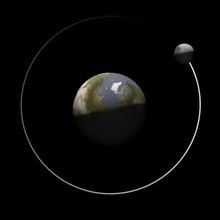

It might be expected that once every month, when the Moon passes between Earth and the Sun during a new moon, its shadow would fall on Earth causing a solar eclipse, but this does not happen every month. Nor is it true that during every full moon, the Earth’s shadow falls on the Moon, causing a lunar eclipse. Solar and lunar eclipses are not observed every month because the plane of the Moon’s orbit around the Earth is tilted by about 5° with respect to the plane of Earth’s orbit around the Sun (the plane of the ecliptic). Thus, when new and full moons occur, the Moon usually lies to the north or south of a direct line through the Earth and Sun. Although an eclipse can only occur when the Moon is either new (solar) or full (lunar), it must also be positioned very near the intersection of Earth’s orbital plane about the Sun and the Moon’s orbital plane about the Earth (that is, at one of its nodes). This happens about twice per year, and so there are between four and seven eclipses in a calendar year. Most of these eclipses are partial; total eclipses of the Moon or Sun are less frequent.
Read more: https://wiki2.org/en/Lunar_phase
++++
++++++++++++++


VT Play moon lamp, night light, moon night light for kids, cool lamps, moon light, cool lights, moon decor, mood lights, night lamp, kids lamp, baby night light, night lamp for bedroom, cute lamp $14.99


Moon Lamp, LOGROTATE 16 Colors LED 3D Print Moon Light with Stand & Remote&Touch Control and USB Rechargeable, Moon Light Lamps for Kids Friends Lover Birthday Gifts(Diameter 4.8 INCH) $17.99


Scholastic Science Vocabulary Readers – Space Books Set (6 Books) for Grades 1-2: The Earth, The Sun, The Moon, The Planets, The Solar System, Stars and Constellations by Liza Charlesworth $19.95




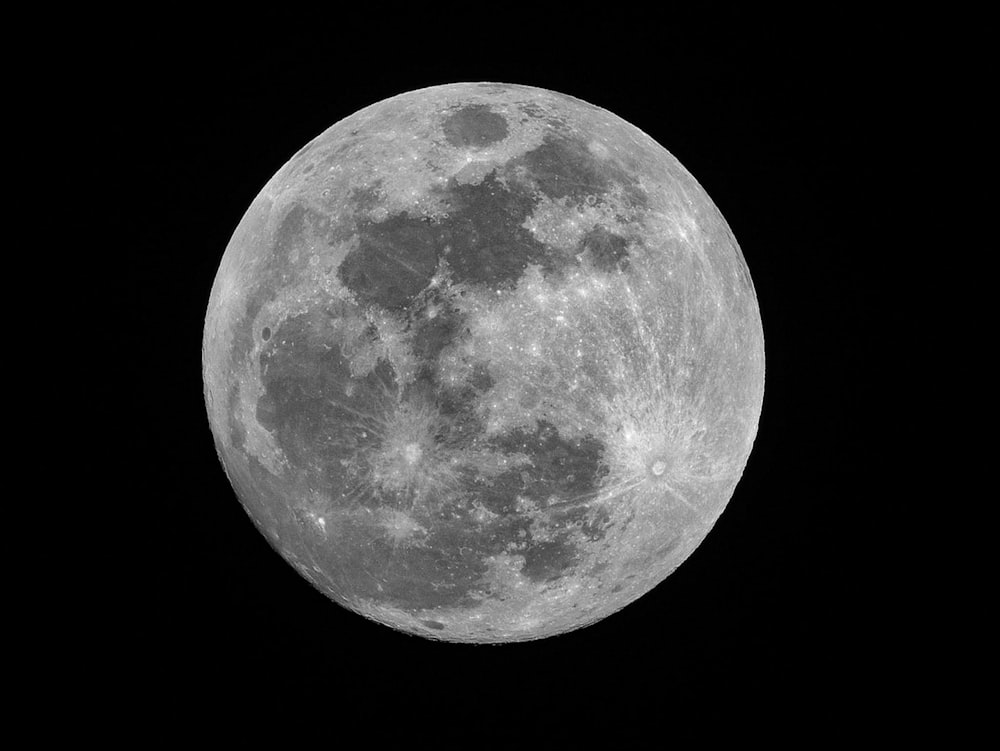
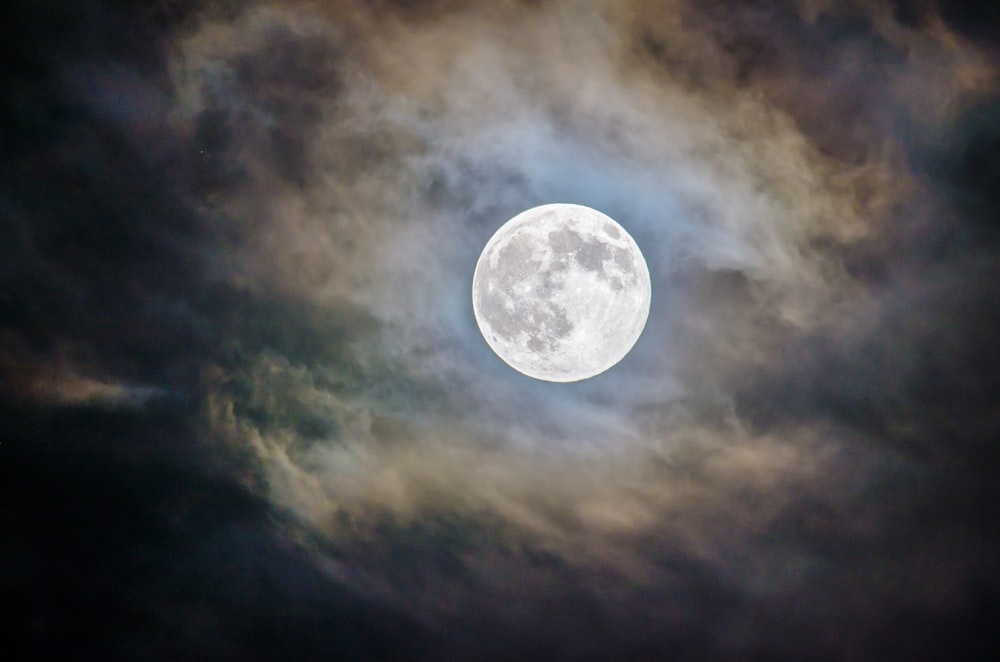
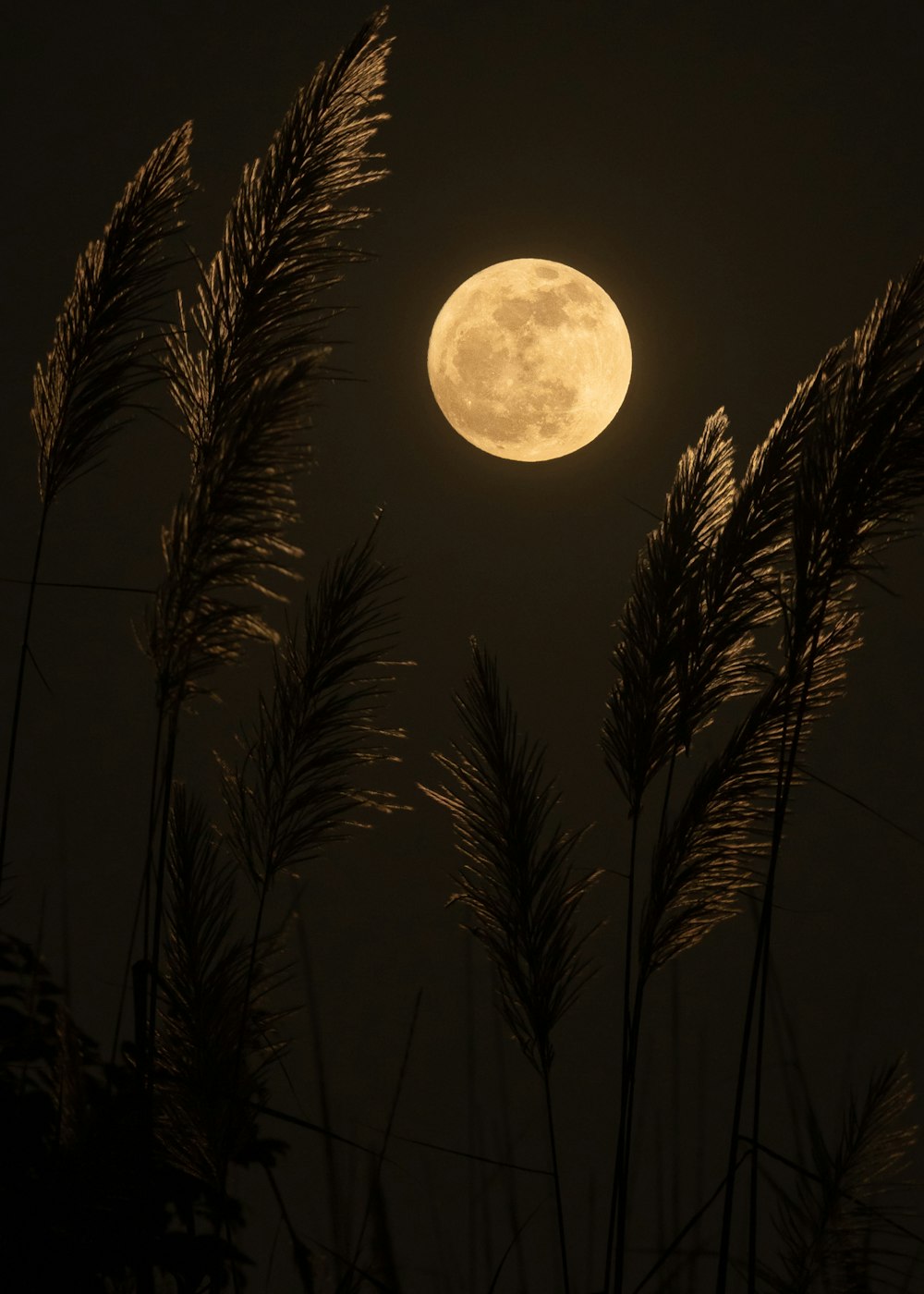
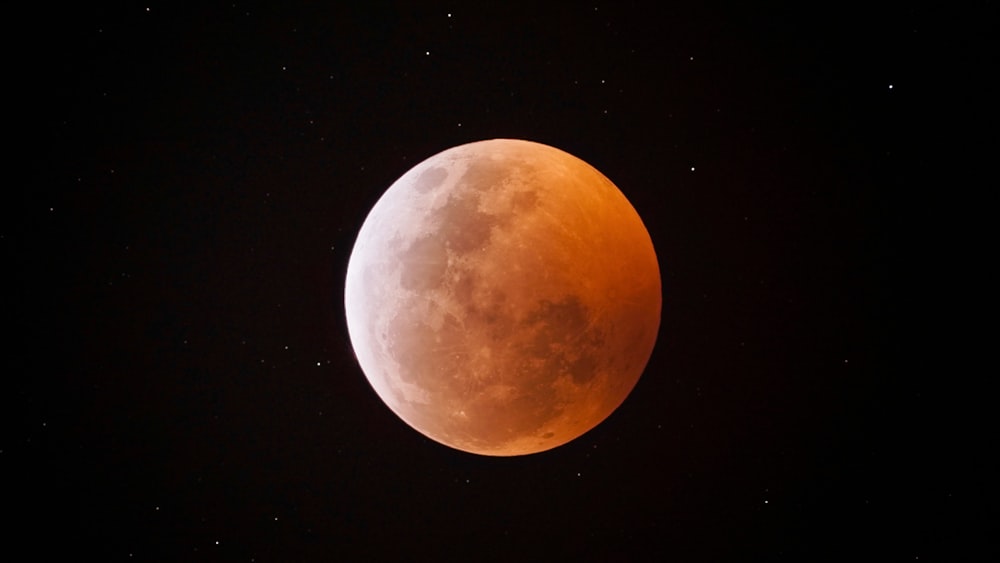
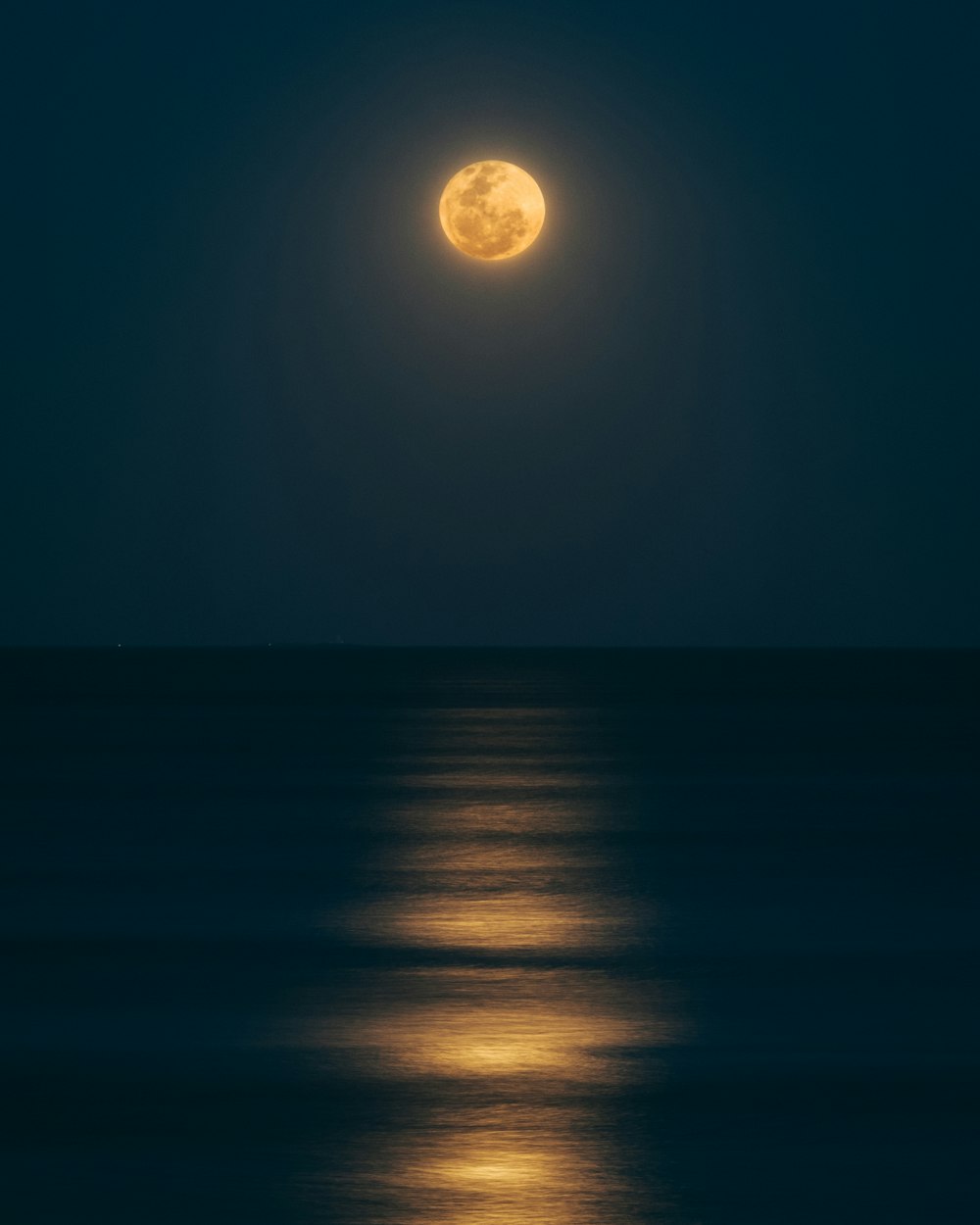


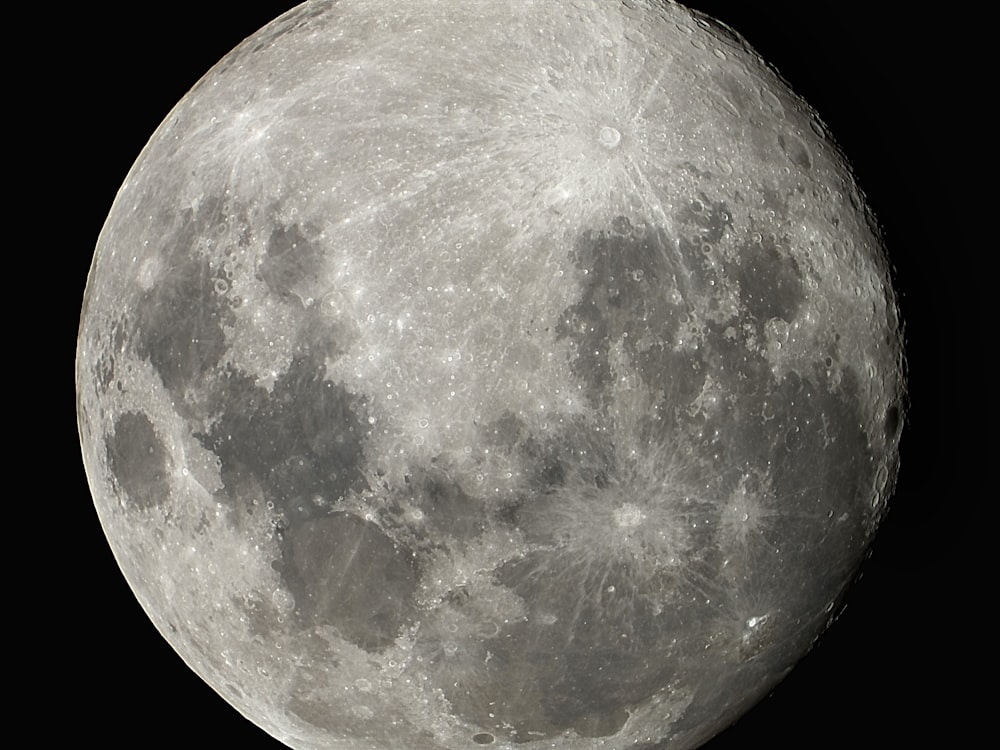

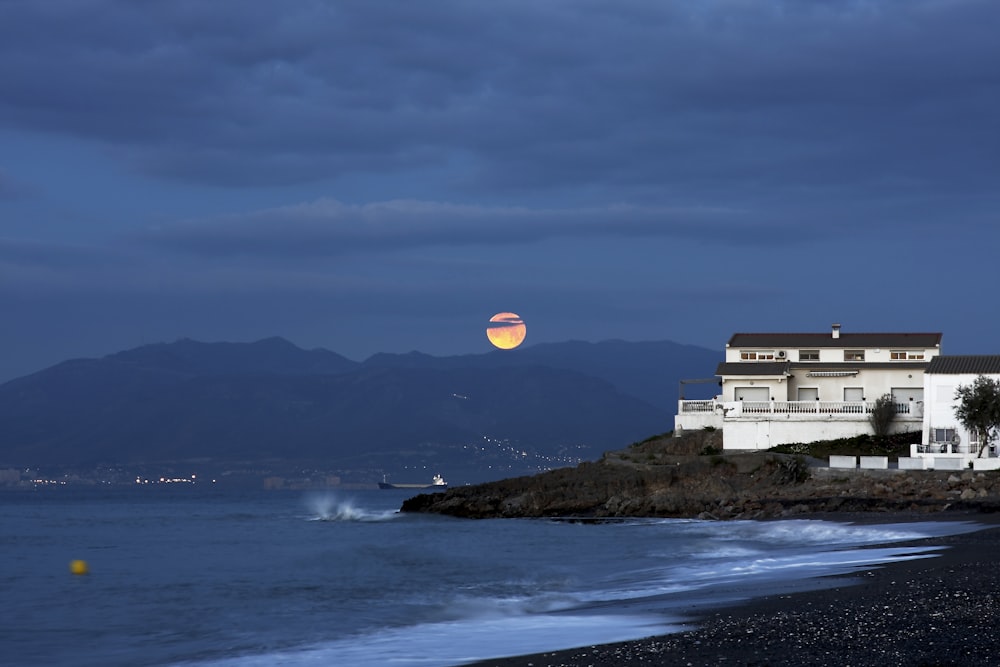

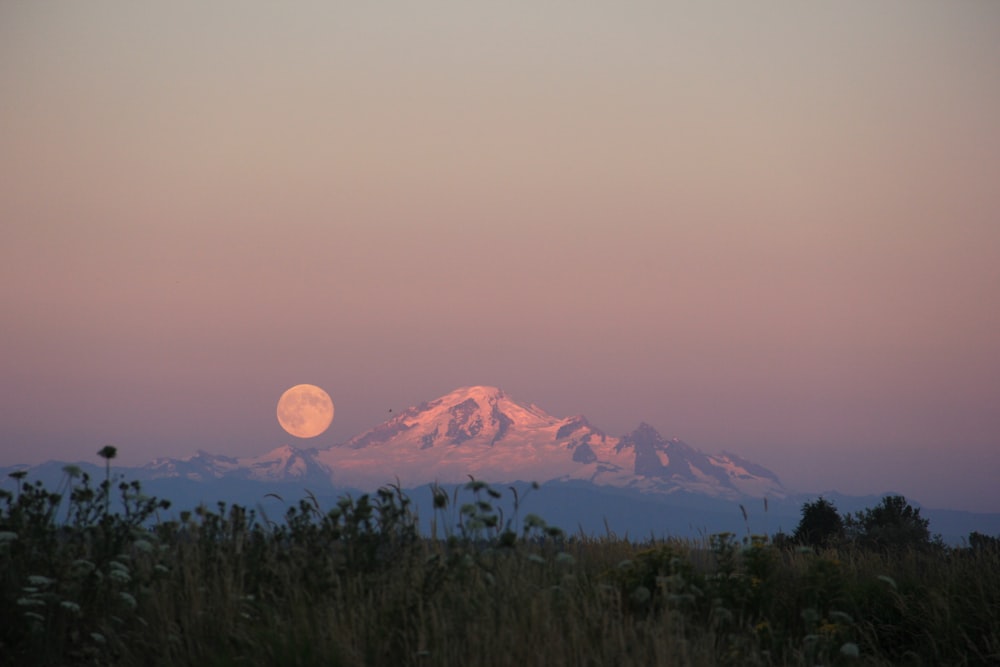
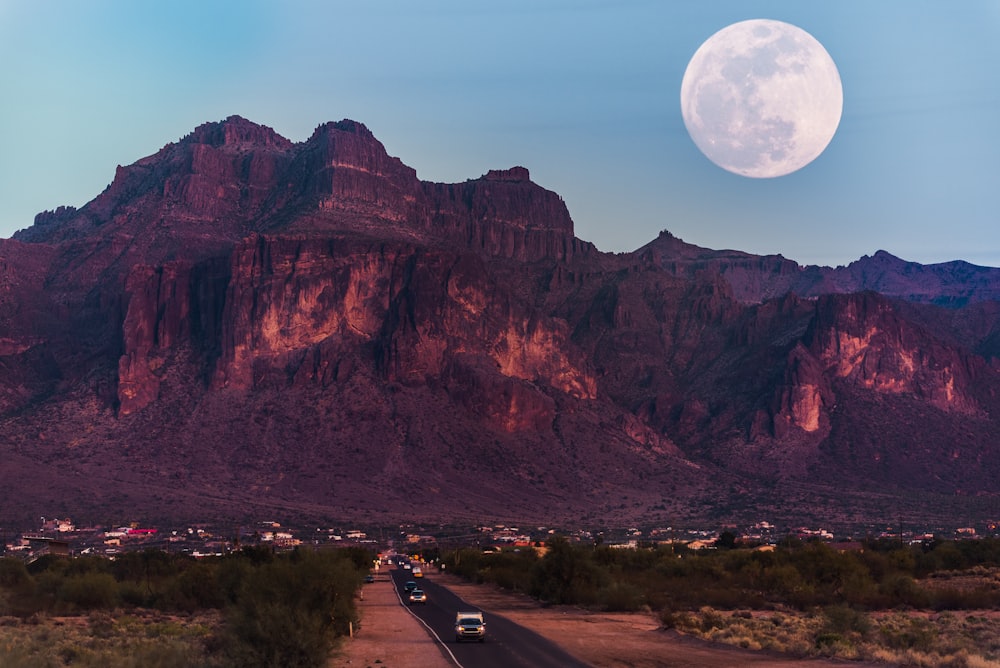
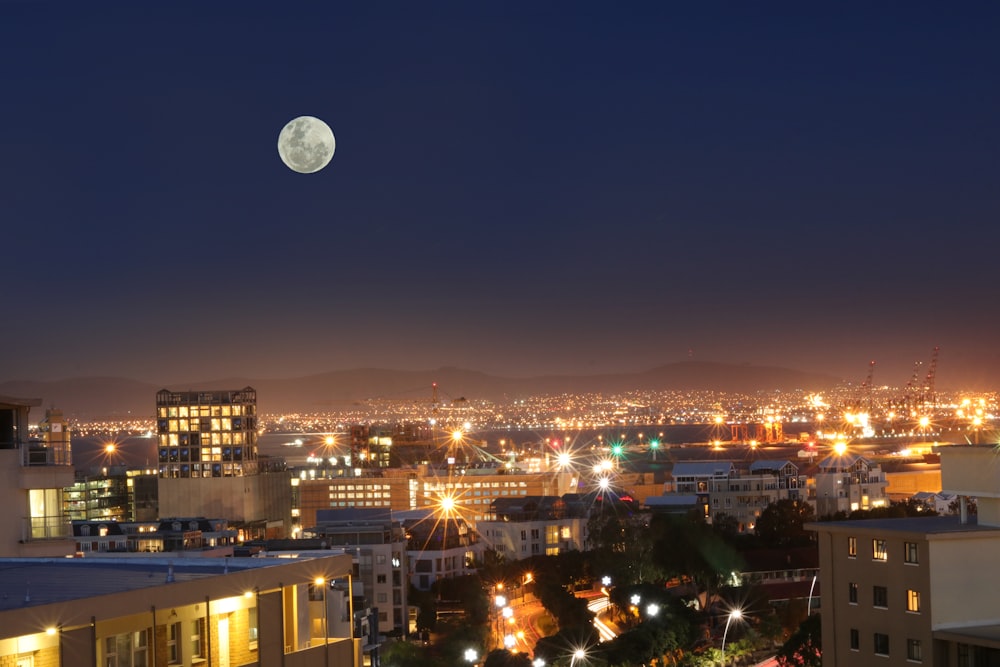
++++++++++++++++++++++


